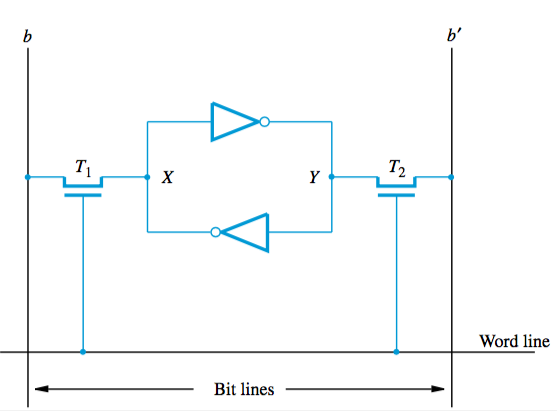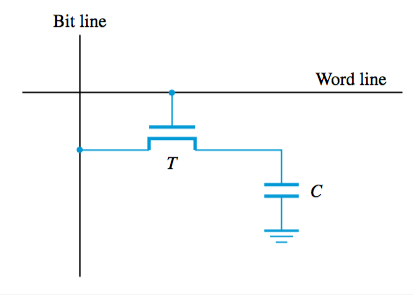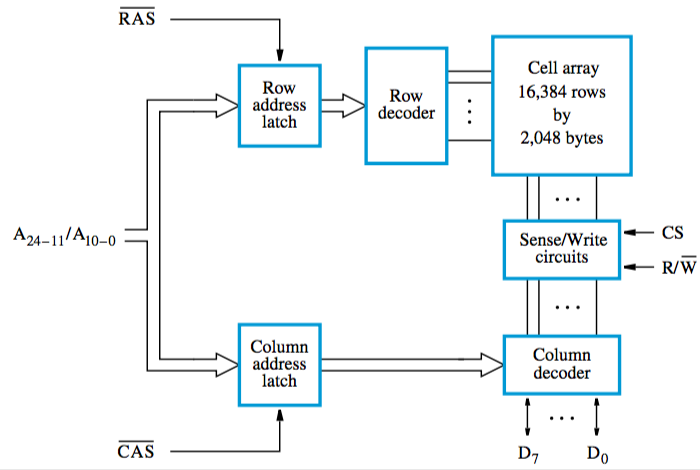Systems Architecture
Table of Contents
Memory types
Static memories (SRAM)
circuits that can retain state as long as power is applied
fast, but cells require several transistors
one cell has two inverters that are cross-connected — a latch

Read operation
- word line is activated, closes switches T1 and T2.
- If cell in state 1, signal on b is high and signal on line b’ is low. Vice versa.
Write operation
- sense/write circuit drives bit lines b and b’
- places appropriate value on line b and its complement on b’, activates word line
- forces cell into corresponding state, retains when word line is deactivated
Dynamic memories (DRAM)
do not retain state for a long period unless accessed frequently
info is stored in form of charge on a capacitor (only for tens of milliseconds)
contents are periodically refreshed when they are accessed/written to
example of single transistor-capacitor DRAM cell:

A full 32M x 8 chip:

Refresh (and read) operation:
- transistor in selected cell is turned on
- sense amplifier on bit line checks if charge in capacitor is above threshold value
- if above, sense amplifier drives bit line to full voltage (1)
- otherwise, pulls bit line to ground level
Fast page mode:
- each sense amplifier is also used as latch
- so when a row address is applied, contents of all cells in the row are loaded into latches
- so all bytes in the row can be transferred sequentially, increasing block transfer speed.
Synchronous DRAMs
operation is synced with a clock signal
built-in refresh circuitry with a refresh counter to refresh specific rows
Double-Data-Rate SDRAM
large number of bits are accessed at the same time when a row address is applied
data are transferred both on rising and falling edges of clock
Rambus Memory
proprietary
uses fewer wires with a higher clock speed
makes use of differential-signaling technique to transfer data
signals are transmitted using small voltage swings of ±0.1V around reference value